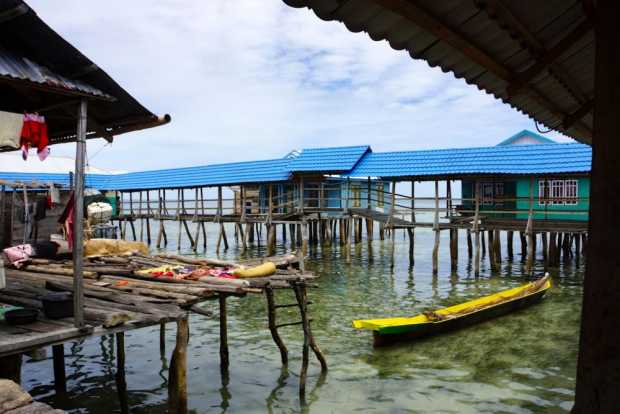Not a member yet? Sign Up!
Info
Please use real email address to activate your registration

A few months ago the magnetism of Torosiaje made us travel 6 hours west of the city of Gorontalo to see this jewel of anthropology.
Torosiaje Village in the Gulf of Tomini is home to the Bajo tribe, the sea nomads.
Stilt village
Until the middle of the last century, according to Dr. Cynthia Chow in her article Research Trends on Southeast Asian Sea Nomads, they live entirely afloat as boat-dwelling fishing communities. Since then, rapid change has occurred as political borders and boundaries have been drawn and re-drawn with the birth of new nations and the question of citizenship.
The Torosiaje village is located in Popayato District, Pohuwato Regent in Gorontalo Province. Torosiaje is said to have been in existence since 1901 starting with several boats moored to mangrove trees. It is now a neat stilt village with more than 200 homes, the settlements of 250 households with more than 1000 people.


The Bajo in Sulawesi
In their paper, Mapping Indonesian Bajau Communities in Sulawesi, 
David Mead and Myung-young Lee present a picture of the location of Indonesian Bajau communities throughout Sulawesi. At present, according to Mead and Lee, the Bajo live in more than one hundred fifty locations across Sulawesi.


Francois Zacot may be a researcher who spent the longest time (30 years) living with the Bajo people in Torosiaje. His book Peuple nomade de la mer: les Badjos d'Indonésie has been translated into Indonesian. The book illustrates in detail how the Bajo lives, including their character, culture, belief, rituals and regulations.


There may be some changes in Torosiaje dwellings compared to when Zacot lived there as the Bajo now live in a rows of houses with different colors and identical roofs, connected by long bridges
One thing that stays the same for years is how the Bajo centered their lives on the sea.
As it was the fasting month when we visited during the day, kitchens have no cooking activities. We did, however, get a chance to see how children and adult alike fishing in the area.
Living from the sea


Moses Usman of Hasanuddin University did some research on the subsistence of the Bajo in Torosiaje.
The Bajos use several traditional fishing gears. They practice sangka (horizontal fishing) and renjong (vertical fishing), use arrows, spears and nanyulu (using kerosene lamps to capture the delicate fish like white anchovies white). Ringgi, a set of tools that are used to catch some nice fish on the beach with a depth of 3 meters to a depth of more than ten meters, is also common in the area.
Usman wrote, the Bajos practice all basic forms of marine fisheries conservation from hundreds of years ago. As fishing tools used are still very simple they do not damage the environment, especially the coral reefs.
Modern life
We walked along the boardwalk, welcomed by the Bajos. Some houses have stacks of woods for cooking. There are well to do families with parabola antenna and even pool table in the house.
Other houses showed beds of dried fish perhaps for sale to some traders visiting the area. Under some wooden houses there are some makeshift ponds with nets to cultivate some fish.

Like their parents, children’s lives are centered in the sea. Walking in front of the wooden houses, their eyes almost always cast down to see what are under the board.
The sea is their playground for swimming, rowing and catching fish.
Children of the sea


In the past, according to Inside Indonesia, Bajo fishers only took enough to feed their families, and for a small amount of trade.
But now, large settled Bajo communities fish very heavily using equipment such as nylon netting, bombs and cyanide fishing. All this has meant that the reefs surrounding many Bajo settlements are now completely barren of marine life.

Conserve vs destroy
The fact above has been the concern of James Morgan a British photographer who took compelling pictures and produced a video called People of the Coral Triangle.
According to Morgan, for the traditional Bajo there are spirits in currents and tides, in coral reefs and mangroves. His interest is the potential for uniting the Bajo’s uniquely intimate understanding of the ocean with wider marine conservation strategies to help them conserve rather than destroy the culture and the spectacular marine environments they have called home for centuries.

On our way back to the city of Gorontalo we thought about the Bajo’s hospitality and hope that the stilt village, its people and the beautiful environment will still shine for decades.
-------------------------------
Text: Amanda Niode
Images: Omar Niode Foundation